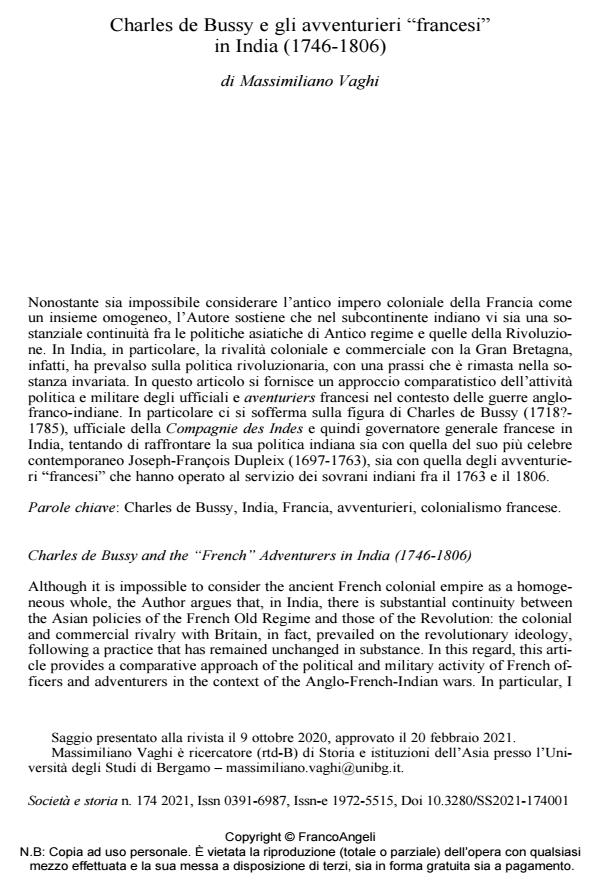Charles de Bussy and the "French" Adventurers in India (1746-1806)
Journal title SOCIETÀ E STORIA
Author/s Massimiliano Vaghi
Publishing Year 2022 Issue 2021/174
Language Italian Pages 27 P. 673-699 File size 241 KB
DOI 10.3280/SS2021-174001
DOI is like a bar code for intellectual property: to have more infomation
click here
Below, you can see the article first page
If you want to buy this article in PDF format, you can do it, following the instructions to buy download credits

FrancoAngeli is member of Publishers International Linking Association, Inc (PILA), a not-for-profit association which run the CrossRef service enabling links to and from online scholarly content.
Although it is impossible to consider the ancient French colonial empire as a homogeneous whole, the Author argues that, in India, there is substantial continuity between the Asian policies of the French Old Regime and those of the Revolution: the colonial and commercial rivalry with Britain, in fact, prevailed on the revolutionary ideology, following a practice that has remained unchanged in substance. In this regard, this article provides a comparative approach of the political and military activity of French officers and adventurers in the context of the Anglo-French-Indian wars. In particular, I focus on the figure of Charles de Bussy (1718?-1785), an officer of the French East India Company and therefore governor of French India, trying to compare his Indian policy both with that of Joseph-François Dupleix (1697-1763) - his most famous contemporary -, and with that of the "French" adventurers who worked in the service of the Indian sovereigns between 1763 and 1806.
Keywords: Charles de Bussy, India, France, Adventurers, French Colonialism.
Massimiliano Vaghi, Charles de Bussy e gli avventurieri "francesi" in India (1746-1806) in "SOCIETÀ E STORIA " 174/2021, pp 673-699, DOI: 10.3280/SS2021-174001